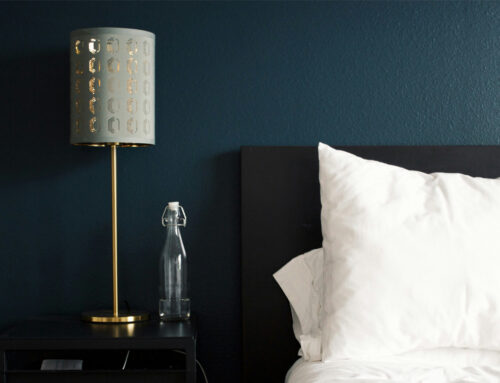Hotel guest rooms account for 40 to 80 percent of energy use in the hospitality industry, with high-end guest rooms consuming 50 to 70 kW and luxury guest rooms consuming more than 80 kW per day. Not only does each guest room require various utilities, guests and staff members are not directly accountable for the overall utility bill, which gives them little incentive to follow energy-efficient practices.
Though hotel guest rooms may hold great potential for cost savings, concerns about the impact of energy-efficiency initiatives on customer satisfaction have kept many hoteliers from investing in energy-management solutions. With recent advances in building-management systems (BMS) and sensors, however, the balance between energy savings and guest comfort easily can be struck.
Hotel Energy-Management Trends
Over the last several years, guest-room energy-management systems (EMS) have become more sophisticated, utilizing sensors and controls to adjust HVAC, lighting, and other systems based on room-occupancy status. Typically, these systems are deployed in one of three ways:
- Keycard-holder system. Most common in hotels in Europe and Asia, these systems require a hotel guest to insert his or her keycard into a special holder to activate a room’s lighting and HVAC. When the guest leaves the room, he or she removes the card from the holder, and the systems turn off, usually with a slight delay. This helps to minimize lighting and HVAC costs, but is not without its faults. In a situation involving heavy use of a HVAC system, a room will not be at the desired temperature upon a guest’s return. Additionally, guests can work around the system by leaving a card in the holder when they leave.
- Enhanced guest-presence detection. This system often is based on a combination of a door sensor and movement detection. A key benefit of this system over the keycard-holder system is that it cannot be bypassed. Additionally, rather than the lighting and HVAC systems being disabled, advanced logic is used to set the thermostat back to a predetermined temperature. When the guest returns, the thermostat returns to its original setting, and control is handed back to the guest.
- Wireless sensors. With wireless sensors installed in hotel guest rooms, facility managers can gather an abundance of comfort, safety, and energy-consumption data. The application of analytics software that can convert data into actionable intelligence can further improve energy efficiency and guest satisfaction.
With a network of automated room controllers, hoteliers can collect data from sensors located in guest rooms and public areas and use it to identify opportunities to improve building performance. Fault-detection-and-diagnostics software can be used to analyze the data, aiding prioritization of maintenance efforts that prevent equipment breakdowns, limit occupant-comfort issues, and maximize energy efficiency. Data can be stored reliably and reviewed monthly by engineers to aid interpretation, prioritization, and reporting of faults.
New Approaches to Hotel Energy Management
Facility managers can either establish stand-alone systems, whereby each room operates in a silo, or integrate guest-room systems into the hotel’s larger BMS.
In a stand-alone system, presence-detection sensors and door/window-contact sensors determine the temperature of a room—whether it be a setback setting for an unoccupied room or a deep setback setting based on a predefined period of no occupancy. Electrical circuits (except for certain outlets that remain active so guests can recharge laptops and devices at any time) are turned off when the system detects the room is empty and turned back on when guests return. In a stand-alone system, devices exchange information inside of a room, but are not connected to systems outside of the room.
To maximize system performance and associated savings, facility managers should integrate guest-room systems into the hotel’s BMS and property-management system (PMS). Such integration allows deeper temperature setbacks for unrented guest rooms. The use of open standards allows BMS and room controls to be integrated with a facility’s front desk and PMS, enabling centralized control of room comfort and promoting a buildingwide approach to energy management.
Following are examples of how such an integrated system can be leveraged:
- If a room is rented but unoccupied, the system can be programmed to allow “drift” from the last set point attained before the room became unoccupied. If a room is unrented, deep setback can be utilized, or, in some cases, the room may be shut down temporarily. The ability to fine-tune these settings can have a significant impact on return on investment (ROI) during the initial payback period.
- Continuous monitoring and alerts result in higher guest satisfaction and improved maintenance response times. Staff members can access system controls by room or floor to help resolve problems and manage in-room energy use for peak performance. Additional data, such as number of manual setback overrides, can provide visibility into employees’ “green performance.”
- When a guest room’s EMS is linked to the PMS, data relating to the rented or unrented status of a room can be collected. With occupancy and vacancy detection, the system is able to alert personnel if a room is occupied during unrented periods. This safeguards company property and ensures staff members are alerted about possible suspicious activity in unoccupied rooms.
ROI
Regardless of the building-management approach a hotel adopts, certain factors must be considered, if ROI is to be maximized. First is the matter of installation cost. Hardwiring a system directly into an existing BMS involves more upfront cost than installing a wireless system. With a wireless system, installation time is dramatically reduced, ensuring minimal downtime and subsequent loss of revenue.
Once a sensor system is in place, a hotel should have a well-defined management strategy to ensure data provided by the BMS are being acted on and inefficiencies are being addressed in a timely manner. Energy-efficiency planning should take into account individual rooms, considering factors such as sun exposure, insulation, and thermal leakage. Over time, using data collected by sensors, hoteliers can identify the least-energy-efficient rooms and take corrective action.
ROI also is affected by property size. Although installation costs vary depending on the number of rooms, larger units tend to experience quicker returns. Often, there is a fixed one-time installation expense; thus, the greater the number of units, the lower the installation cost per room. Another factor is the location of the hotel and the regional climate, as this will, of course, affect the usage of HVAC systems and potential savings. Lastly, there is the customer base, as vacationers and business travelers operate on different schedules and have different energy-usage levels.
Conclusion
Hotels consume an abundance of energy. This, however, presents a significant opportunity for facility managers to operate more efficiently and reduce cost.
Hotel facility managers can collect data and identify inefficiencies in a non-intrusive way by installing sensors in guest rooms and connecting the rooms to a BMS. Furthermore, they can tell whether a room is occupied, unoccupied, or unrented and adjust HVAC and lighting settings accordingly, maximizing efficiency and reducing waste. All of this can be achieved with negligible impact on guest comfort, as long as hoteliers take into account factors affecting energy efficiency and plan accordingly.
By understanding the key factors driving ROI, hoteliers can ensure they have a guest-room EMS that meets their needs, works within budget, and pays for itself by optimizing efficiency.
**Source: HPAC Engineering | Balancing Hotel Energy Use and Guest Comfort



